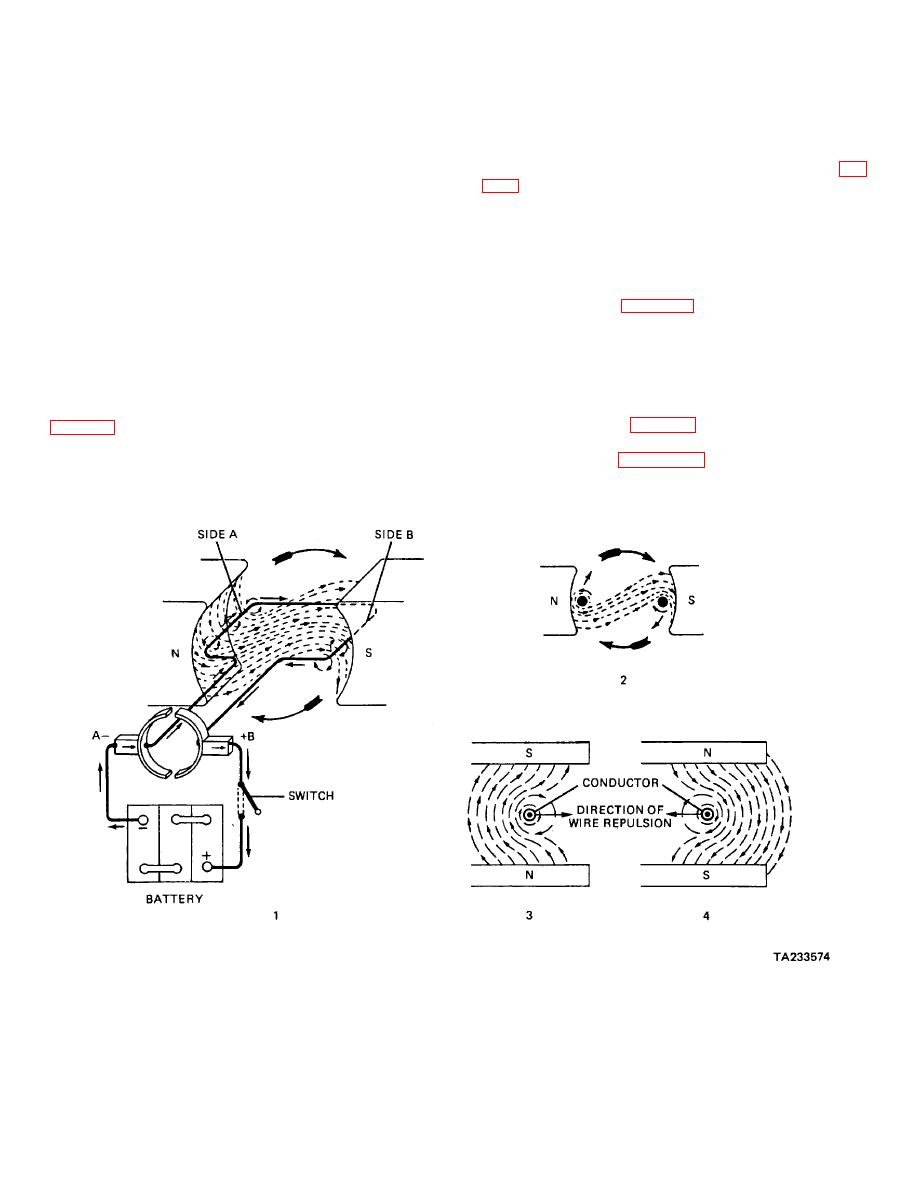
| Tweet |

Custom Search
|
|

|
||
 TM 9-8000
CHAPTER 14
STARTING SYSTEMS
Section I. ELECTRIC STARTING MOTOR
whirl set up around the loop of wire by the current (2, fig.
be cranked manually to start it running on its own. Early
automotive vehicles were started by the driver through
b. Operation. The repulsion is caused by all the
the use of a handcrank. A system of cranking the engine
magnetic lines of force tending to flow around the
with an electric motor was developed as automotive
conductor in the same direction. This distorts and
technology progressed. The modern electric starting
crowds the magnetic lines on one side of the conductor
system has reduced the task of starting an internal
more than on the other, which results in a repulsion of
combustion engine to the turn of a key or the pushing of
the conductor (3, fig. 14-1). In other words, the
a button.
rubberband characteristic of the lines of force (that is,
when they try to shorten to a minimum length) causes
14-2. Simple DC Motor.
the lines to exert a push on the conductor. If the
a. Construction. An electric motor is constructed
magnetic field is reversed, with the direction of current
essentially the same as a generator. If the brushes of
unchanged, the magnetic lines of force will crowd to the
the simple generator are connected to a battery and
other side of the conductor, and it will be repelled in the
current is permitted to flow through the loop of wire (1,
opposite direction (4, fig. 14-1). The same action would
result if the current, instead of the magnetism, were
indicated by the arrow. This rotation is due to the
reversed. Thus, in figure 14-1, owing to the current
repulsion between the field magnetism and the magnetic
flowing in reverse directions
Figure 14-1. Simple DC Motor
14-1
|
||
 |
||